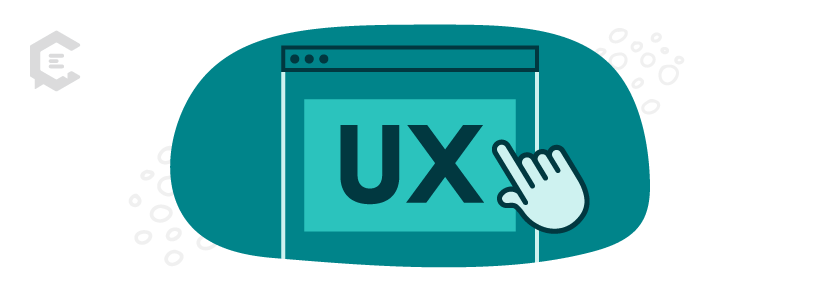Can’t make sense of certain content marketing terms?
We get it—it’s a jargon-y business. This content marketing glossary can help.
Why is knowing content strategy terms important?
The industry is full of acronyms, terms, and initialisms. Making it challenging for most people to understand; at first. No matter your role in a content marketing campaign, you can’t be effective if you don’t know the terminology.
To avoid feeling lost during the next content meeting, learn these content strategy terms:
A/B testing is a way to compare two versions of something to figure out which performs better. It is also known as split testing. Content marketers use A/B testing to gauge the effectiveness of various factors. For example, subject lines, button color/shape/placement/text, CTA placement, headlines, etc.
Accessibility
Accessibility in marketing refers to the use of technology and tools that allow people with disabilities can access the web. The goal is to make your site as usable by as many people as possible. Including those with auditory, physical, and/or visual impairments.
Account-based marketing (ABM)
Account-based marketing is a B2B strategy that targets high-value accounts. Decision-makers choose a select number of accounts that represent high-growth opportunities. They then deliver personalized content, tools, and targeted advertising in an effort to grow those accounts.
Alt text
Alt text is the words you use to describe an image on a page. Placed in either HTML code or in your CMS, Alt text enables screen readers to read the information about the image to a visually impaired user. Alt text also describes the image for search engines, so they can appropriately index and rank the image in search.
Analytics
Analytics refers to the data gleaned from tracking and analyzing your digital marketing efforts. Marketers use this data to evaluate their tactics. Also, to better understand their audience and refine their approach.
Anchor or anchor text
The anchor or anchor text is the word or phrase (usually underlined and blue) that’s linked to a web page. It tells users and search engines relevant contextual information about the destination page.
Audience or target audience
Your audience is the group most likely to want your product or service. Target audience is often defined in various terms, such as age, gender, level of education, marital status, income, purchasing power, location, profession, etc.
Backlinks
A backlink is simply a link from one site to another. They are essential for SEO, as Google sees them as “votes of popularity,” attesting to the quality of your page. For example, if Abe’s Dairy links to a veterinarian practice, they have given the practice a backlink.
Read: How to Build Backlinks With the Skyscraper Content Technique
Branded content
Branded content is any content that is clearly created by your company to share your story, products/services, or values with a target audience. It can take many forms, from social media posts to blog content to podcasts.
Call to action (CTA)
Anytime you urge a user to take action on a site or in an email, that’s a CTA. Poorly crafted and placed CTAs can tank your conversion rates.
Read: How to Create Irresistible CTAs in Your Content (With 15 Examples)
Content Management System (CMS)
A content management system (CMS) is software for managing and publishing content. WordPress, Joomla, Drupal, Squarespace, and Sitecore are examples of popular CMSs.
Content audit
A content audit is a process of taking inventory of your site’s content assets. By measuring them against a set of criteria, you can identify pages that are performing poorly. Also, why that may be so, and how to improve performance going forward.
Content brief
A content brief is a document that outlines exactly what you want a writer to write. It should contain all the necessary information to create content that meets your expectations, such as tone, target audience, keywords, word count, list of competitors to avoid, takeaways, CTAs, etc.
Content format/type
All the ways one could present content, including blog posts, videos, podcasts, infographics, case studies, ebooks, webinars, quizzes, polls, and email newsletters.
Content governance plan
This is the framework that lays out who is responsible for each aspect of content production and publishing. It clarifies the roles and responsibilities of all stakeholders.
Content marketing
Half art, half science, content marketing is a powerful digital marketing strategy. A brand provides its target audience with high-quality, relevant information that entertains them, answers their questions, and/or helps them solve their problems. In turn, consumers and sites reward brands with increased awareness and trust, higher traffic, more social shares, and backlinks.
Content strategy
This is the plan that outlines how your company will use content to meet its business goals. It is a data-informed roadmap that focuses on the creation, delivery, and governance of content.
Conversion, conversion rate, CRO
A conversion is when a user completes a specific goal you set, such as filling out a form, subscribing to a newsletter, or making a purchase. The conversion rate measures the number of users who converted against the total number of site visitors. The higher the conversion rate, the better your content is performing. Conversion rate optimization (CRO) is the process of improving your site’s conversion rates.
Editorial calendar
Usually created in a spreadsheet application or specialty software. This document tracks the creation, publication, and promotion of content across your channels.
Influencer marketing
This is a subcategory of digital marketing. It uses endorsements and product mentions from people (influencers) who have a dedicated social following. These influencers are generally experts in their niche.
Keywords
Keywords are the words or phrases users type into a search engine to perform a search. You want to create content that targets the same search terms your target audience is using.
Key performance indicators (KPIs)
KPIs are the specific, measurable metrics you use to track and analyze the performance of your marketing efforts. Common ones used in content marketing are page views, time on page, bounce rate, leads, social shares, conversion rate, etc.
Landing page
This is the webpage a visitor lands on when clicking through to your site. Whether from an ad, email, or social post. When crafted properly, landing pages help increase conversions.
Metadata
Technically, metadata is “data about data.” It’s the specific information you use to describe elements of your site. Common metadata includes title tags, the meta description (see next entry), blog categories and tags, and the content type and format.
Meta description
The meta description is the short paragraph of text that appears as part of the search results. It describes the content on the destination page. It’s vital for click-through rates and is usually optimized for keywords and search intent.
Personas
Often referred to as marketing personas, buyer personas, or sales personas. This term applies to the fictitious profiles a brand creates to represent its typical or target customers. Personas give a personal feel to a segment of the market you are trying to capture. Also, brands create them using the real-life data of consumers.
Sales funnel/stage of the funnel
Many will tell you the traditional sales funnel is dead. They may be right—but it’s still an essential and oft-used term. Also called a purchase funnel. It depicts a user’s journey from first learning about your brand to making a purchase and advocating for you.
Read: The Advanced Guide to Sales Funnel Copywriting
Style guide
A style guide is a set of writing standards that defines the rules of grammar and punctuation for your company. There are several established styles out there—for example, the MLA Handbook and the Chicago Manual of Style. However, the Associated Press style is arguably the most popular style used in American journalism and content writing.
Subscribers
Anyone who opts into one of your mailing lists is a subscriber.
Usability, user experience (UX)
These terms are closely related but not quite the same thing. Usability is a measure of how easy it is for a person to use a product to complete a task. User experience (UX) is a broader term that describes the user’s entire interaction with a product. From how they thought it would work, to hiccups and wins, to how they feel about it now. As well as the total experience with your brand.
Get help with your content strategy
Too often, brands haphazardly create content with no strategy or insights to back up the plan (if there even is a plan).
ClearVoice offers comprehensive SEO and content strategy services that target your key audiences with the right messaging in the right channel at the right time.
If you need help with content strategy, reach out today.









